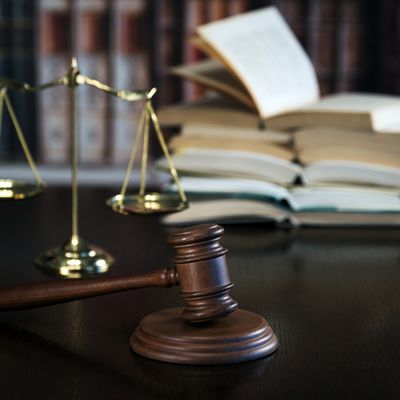1.3.1
Creation of the FRG, 1945-1949
The Development of Bizonia
The Development of Bizonia
In 1947, Britain and the United States combined their zones in Germany to form Bizonia. This was a direct violation of Potsdam and angered the Soviet Union.


Clashes between the East and West before 1947
Clashes between the East and West before 1947
- Zones occupied by the British, French and United States were run as capitalist economies.
- Free trade was used to stimulate economic growth.
- But the Soviet sector was run along communist lines.
- Stalin and his government confiscated produced goods in Germany for the Soviet Union.


Economic problems
Economic problems
- The harsh winter of 1946/1947 led to shortages in Germany. Zones had to introduce rationing.
- Food imports were costing on average $700 million per year.
- It became apparent that the zones needed to cooperate.


Creation of Bizonia
Creation of Bizonia
- Bizonia unified the British and American zones economically.


Creation of Trizonia
Creation of Trizonia
- In April 1949, France joined Bizonia to form Trizonia.
The Basic Law
The Basic Law
In 1949, the Federal Republic of Germany (FRG) formally split from the east. It introduced a new constitution which cemented democratic values in the republic.


Developing the constitution
Developing the constitution
- Between 1948 and 1949 a new constitution was being developed for the FRG.
- It was being drawn up by a delegated council from parliament, however, was also closely supervised by the Western Powers.
- The constitution was called the ‘Basic Law’ but was expected to be a temporary measure until Germany was unified.
- The Basic Law came into force in May 1949.


Contents of the constitution
Contents of the constitution
- The constitution guaranteed basic freedoms.
- The authors of the Basic Law ensured that no dictator could take control of the FRG.
- It ensured the all governments in the FRG would be democratically elected.


Representative vs participatory democracy
Representative vs participatory democracy
- To prevent the rise of a dictator, the constitution worked off ‘representative’ democracy instead of ‘participatory’ democracy.
- Representative democracy means the public elect representatives to take decisions on their behalf.
- Participatory democracy means that individuals participate in the political decision-making process.


Proportional representation vs. first past the post
Proportional representation vs. first past the post
- One of the problems in the Weimar Republic was that proportional representation meant small parties had considerable influence in coalition governments.
- To overcome this, the Basic Law ensured that a blend of proportional representation and first past the post (where the person with the most votes is elected even without a majority) to elect people for the Bundestag.
- Another amendment was made which stated that parties needed at least 5% of the vote to be represented in parliament.


The President and Chancellor
The President and Chancellor
- Unlike Weimar Germany, the president in the FRG was chosen by a group of members from the Bundestag and the Länder parliaments.
- Similarly, the Chancellor needed to be approved by parliament. Not simply the President.
- This limited the possibility of anti-democratic leaders.
The 1949 election
The 1949 election
Elections in the Federal Republic were free. The Christian Democratic Union won the first election and Konrad Adenauer became Chancellor.


The election
The election
- The elections for the Bundestag were held in August 1949.


The CDU
The CDU
- The Christian Democratic Union (CDU) was led by Konrad Adenauer.
- The CDU had cross-confessional (different branches of Christianity) appeal and conservative values.
- It promised to focus on families, social welfare, and defend the Federal Republic against the threat of communism.


The SPD
The SPD
- The Social Democratic Party (SPD) was led by Kurt Schumacher.
- The party wanted a united and socialist Germany.
- Schumacher accused Adenauer of being a puppet of the Allied powers.


The results
The results
- With a very high turnout of 78.5%, the elections resulted in the CDU receiving 31% of the vote and the SPD receiving 29.2% of the vote.
- Adenauer formed a government and became Chancellor.
1Political & Governmental Change, 1918-1989
1.1Creation & Collapse of Weimar, 1918-1932
1.2Nazi Dictatorship, 1933-1945
1.3Return to Democratic Government, 1945-1989
2Opposition, Control & Consent 1918-1989
2.1Opposition to Government, 1918-1989
2.2Controlling the People, 1918-1989
3Economic Developments & Policies, 1918-1989
3.1Reacting to Economic Challenges, 1918-1932
3.2Controlling the Economy, 1933-1945
3.3Creating the Social Market Economy, 1945-1989
4Aspects of Life, 1918-1989
4.1Attitudes Towards Women, 1918-1989
4.2Education & Cultural Developments, 1918-1989
5Historical Interpretations
5.1Influence of German History
5.2Hitler & Foreign Policy
5.3Contribution of Other Nations to WW2
5.4Reasons for Invading Poland
Jump to other topics
1Political & Governmental Change, 1918-1989
1.1Creation & Collapse of Weimar, 1918-1932
1.2Nazi Dictatorship, 1933-1945
1.3Return to Democratic Government, 1945-1989
2Opposition, Control & Consent 1918-1989
2.1Opposition to Government, 1918-1989
2.2Controlling the People, 1918-1989
3Economic Developments & Policies, 1918-1989
3.1Reacting to Economic Challenges, 1918-1932
3.2Controlling the Economy, 1933-1945
3.3Creating the Social Market Economy, 1945-1989
4Aspects of Life, 1918-1989
4.1Attitudes Towards Women, 1918-1989
4.2Education & Cultural Developments, 1918-1989
5Historical Interpretations
5.1Influence of German History
5.2Hitler & Foreign Policy
5.3Contribution of Other Nations to WW2
5.4Reasons for Invading Poland
Unlock your full potential with Seneca Premium
Unlimited access to 10,000+ open-ended exam questions
Mini-mock exams based on your study history
Unlock 800+ premium courses & e-books